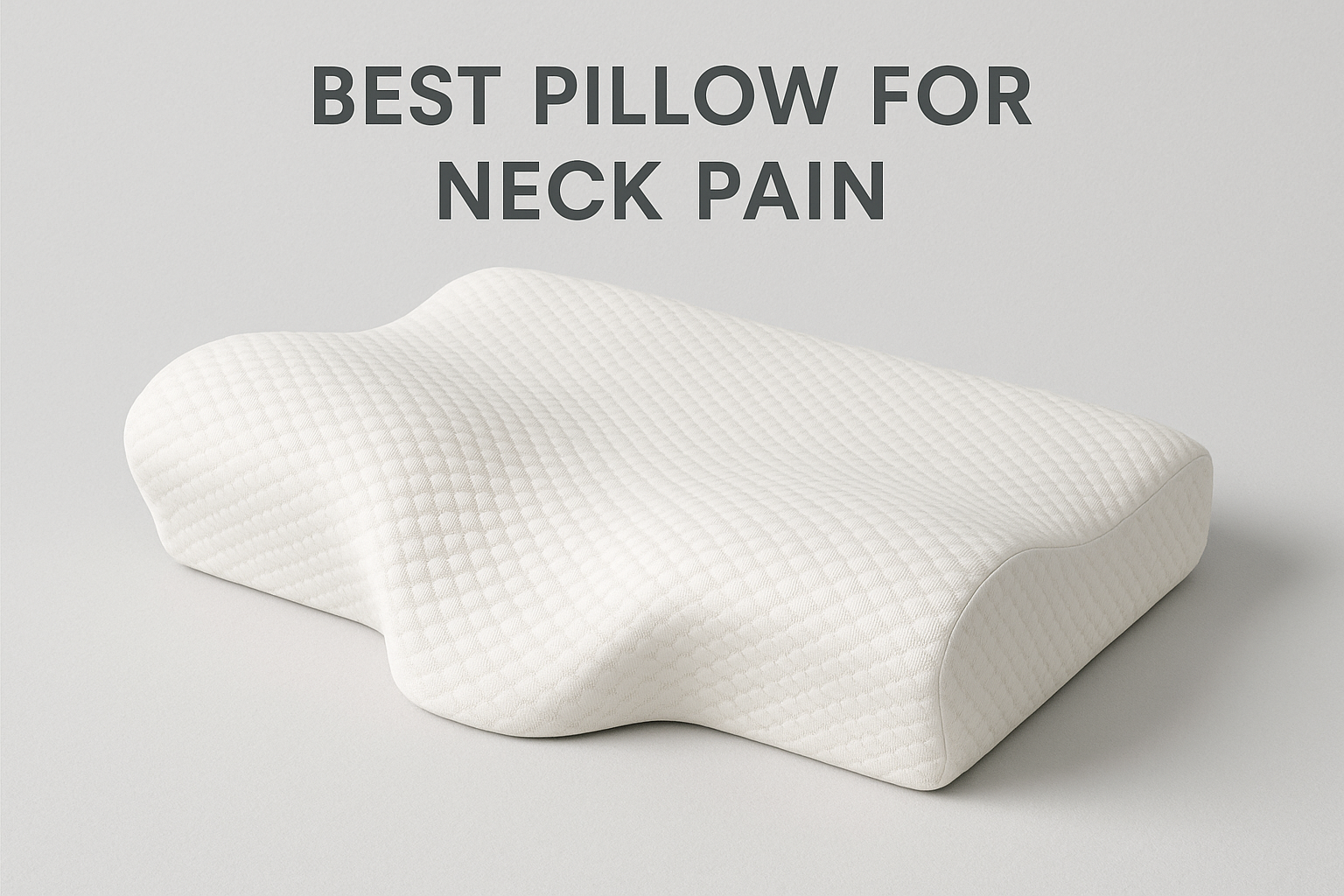The right pillow doesn’t just provide comfort; it maintains proper spinal alignment throughout the night, reducing strain on your cervical vertebrae and surrounding muscles. When your head and neck are properly supported, you’re less likely to wake up with that familiar crick or persistent ache.
Choosing the best pillow for neck pain isn’t a one-size-fits-all decision. Your sleep position, preferred materials, and specific pain points all play crucial roles in determining which option will give you the relief you’re seeking. This guide will walk you through everything you need to know to make an informed choice and finally get the restorative sleep your neck deserves.
Understanding Neck Pain and Sleep
Neck pain affects approximately 30% of adults annually, with poor sleeping posture being a significant contributing factor. When you sleep, your neck should maintain its natural curve—the same gentle C-shape it has when you’re standing with good posture.
Several factors can disrupt this natural alignment during sleep:
Poor sleeping posture occurs when your pillow is too high, too low, or lacks adequate support, forcing your neck into unnatural positions for hours at a time.
Muscle tension builds up when your neck muscles work overtime to compensate for inadequate support, leading to stiffness and pain upon waking.
Existing conditions such as arthritis, herniated discs, or previous injuries can be exacerbated by improper pillow support.
Your pillow serves as the bridge between your mattress and your head, filling the gap created by your shoulder width (for side sleepers) or supporting your neck’s natural curve (for back sleepers). When this support is inadequate or misaligned, your neck bears the burden throughout the night.
Key Features of Effective Neck Pain Pillows
Material Matters
Memory foam contours to your head and neck shape, providing consistent support while relieving pressure points. It responds to body heat and weight, creating a custom fit that maintains its shape throughout the night.
Latex offers responsive support with natural bounce-back properties. It’s naturally hypoallergenic and breathable, making it an excellent choice for hot sleepers who need consistent neck support.
Down and down alternative provide adjustable comfort through their malleable nature. While traditional down may lack the structured support some neck pain sufferers need, high-quality options can be molded for personalized positioning.
Loft and Height
The optimal pillow height depends entirely on your primary sleep position:
Side sleepers typically need higher loft pillows (4-6 inches) to fill the space between their shoulder and head, keeping the spine aligned.
Back sleepers benefit from medium loft pillows (3-4 inches) that support the neck’s natural curve without tilting the head forward.
Stomach sleepers require the lowest loft (2-3 inches or less) to prevent neck hyperextension, though this position is generally not recommended for those with neck issues.
Firmness and Support
Medium to medium-firm pillows typically provide the best balance of comfort and support for neck pain sufferers. The pillow should be firm enough to maintain its shape and keep your neck aligned, yet soft enough to cushion pressure points and allow for comfortable positioning adjustments.
Ergonomic Design
Cervical pillows feature contoured shapes specifically designed to support the neck’s natural curve. These pillows often have a depression for the head and raised areas for neck support, though they may require an adjustment period as your body adapts to the new positioning.
Top Pillow Recommendations for Neck Pain
Tempur-Pedic Tempur-Neck Pillow
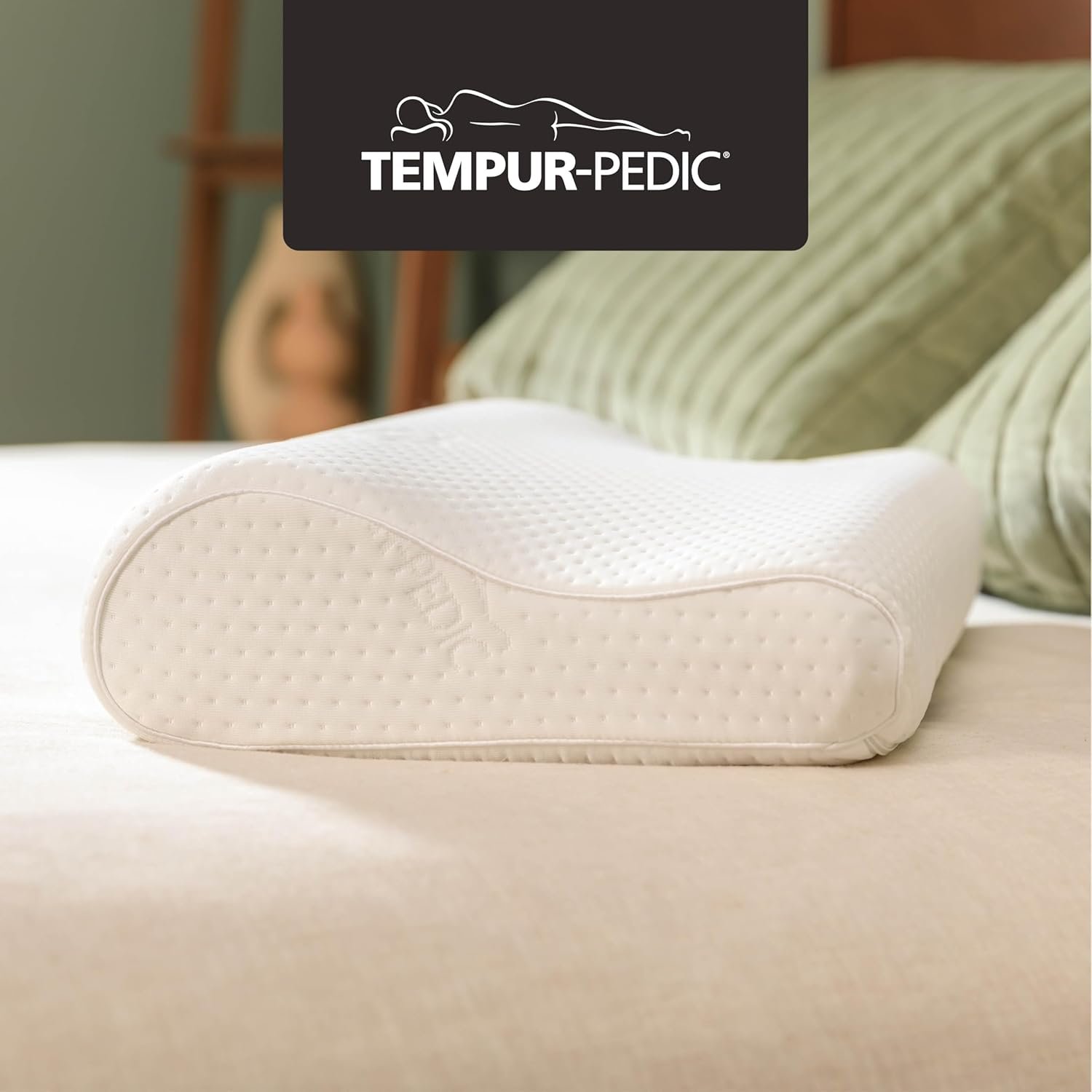
This ergonomically designed pillow features the brand’s signature pressure-relieving memory foam in a contoured shape that cradles the head while supporting the neck’s natural curve. Its dual-surface design offers different comfort levels on each side.
Eli & Elm Side Sleeper Pillow
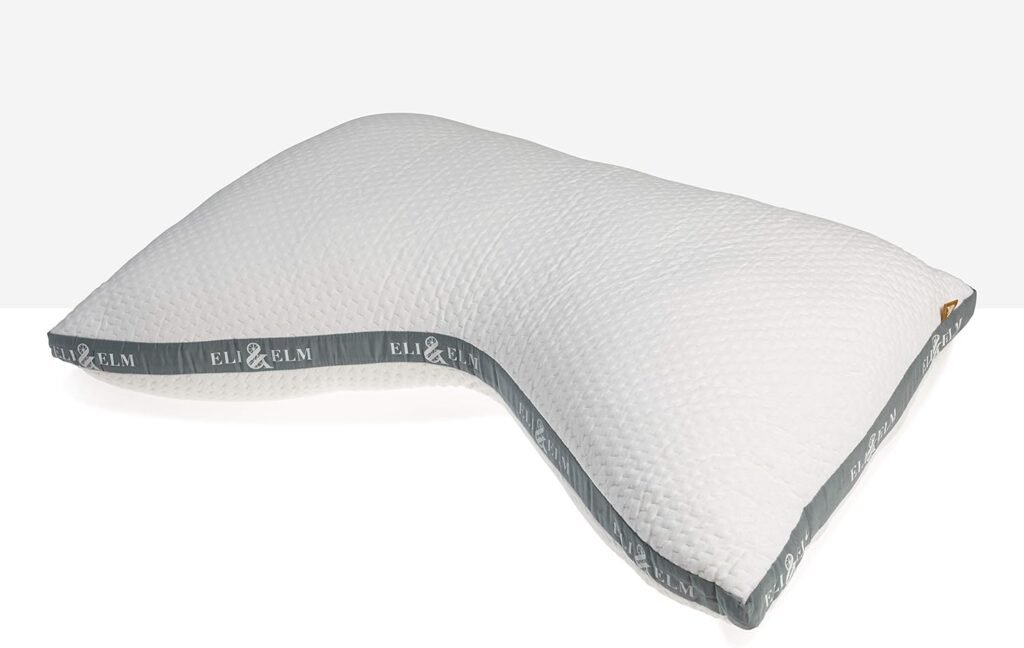
Specifically engineered for side sleepers, this pillow combines memory foam and down alternative materials in a unique U-shape that provides consistent support while allowing for natural movement throughout the night.
Avocado Green Pillow

This sustainable option features organic materials with an adjustable design, allowing you to add or remove fill to achieve your ideal height and firmness level for optimal neck support.
Osteo Cervical Pillow
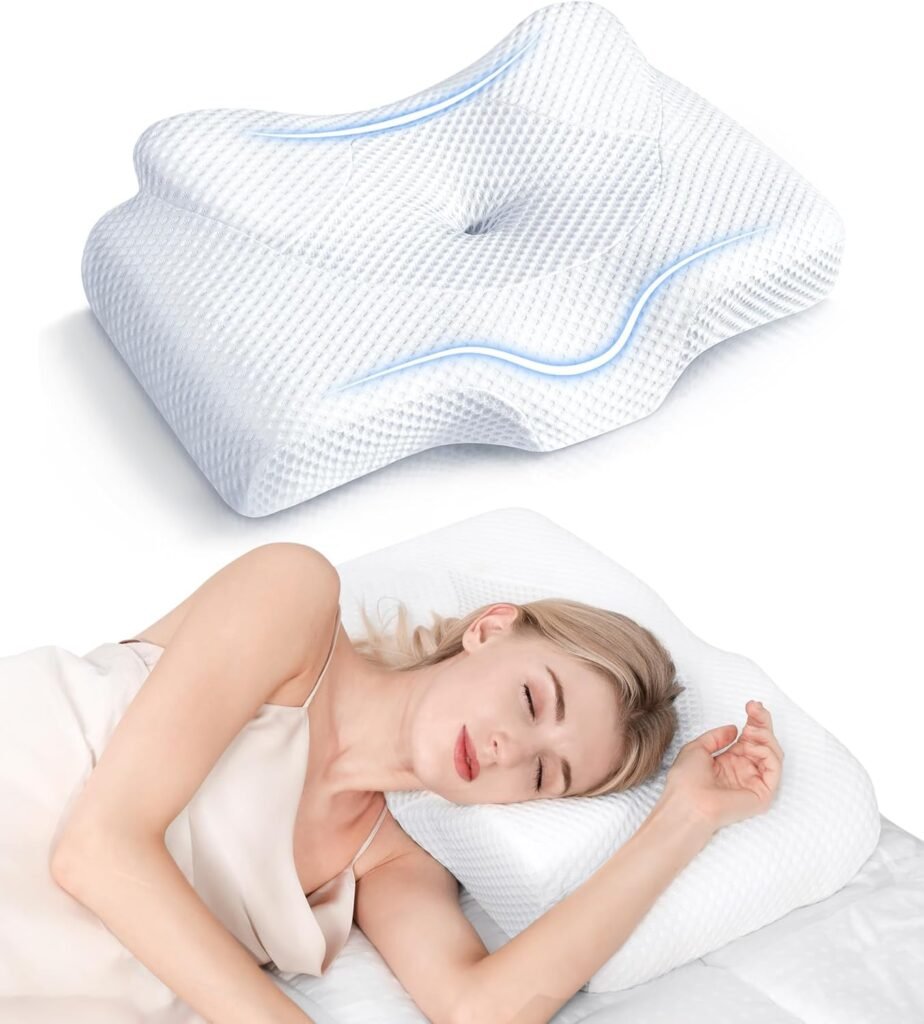
Designed with input from orthopedic specialists, this pillow features a contoured shape that specifically targets cervical spine alignment, making it particularly beneficial for those with chronic neck issues.
Epabo Contour Memory Foam Pillow
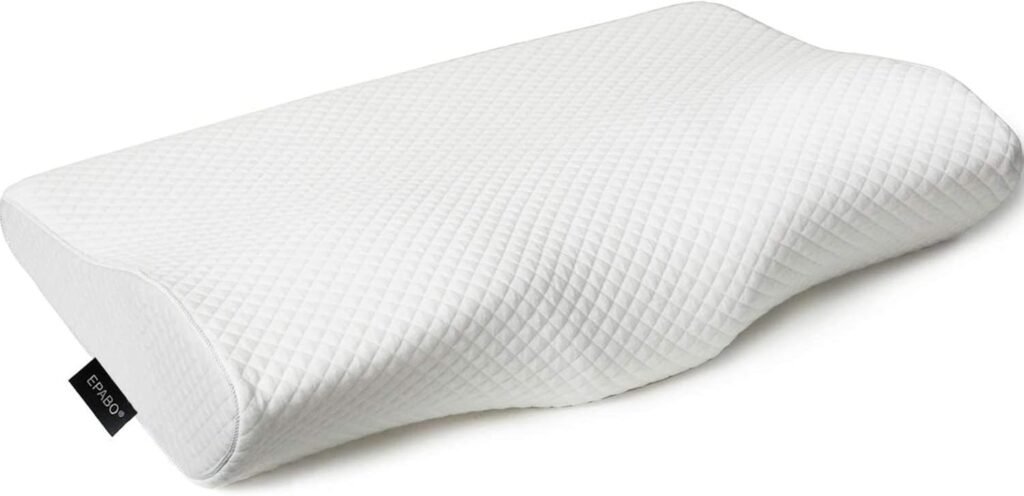
An affordable ergonomic option that provides the benefits of contoured memory foam support without the premium price tag, making quality neck pain relief accessible to more people.
Saatva Latex Pillow

Combining a shredded latex core with a down alternative layer, this pillow offers responsive support with the comfort of traditional pillow feel, plus excellent temperature regulation.
Layla Kapok Pillow
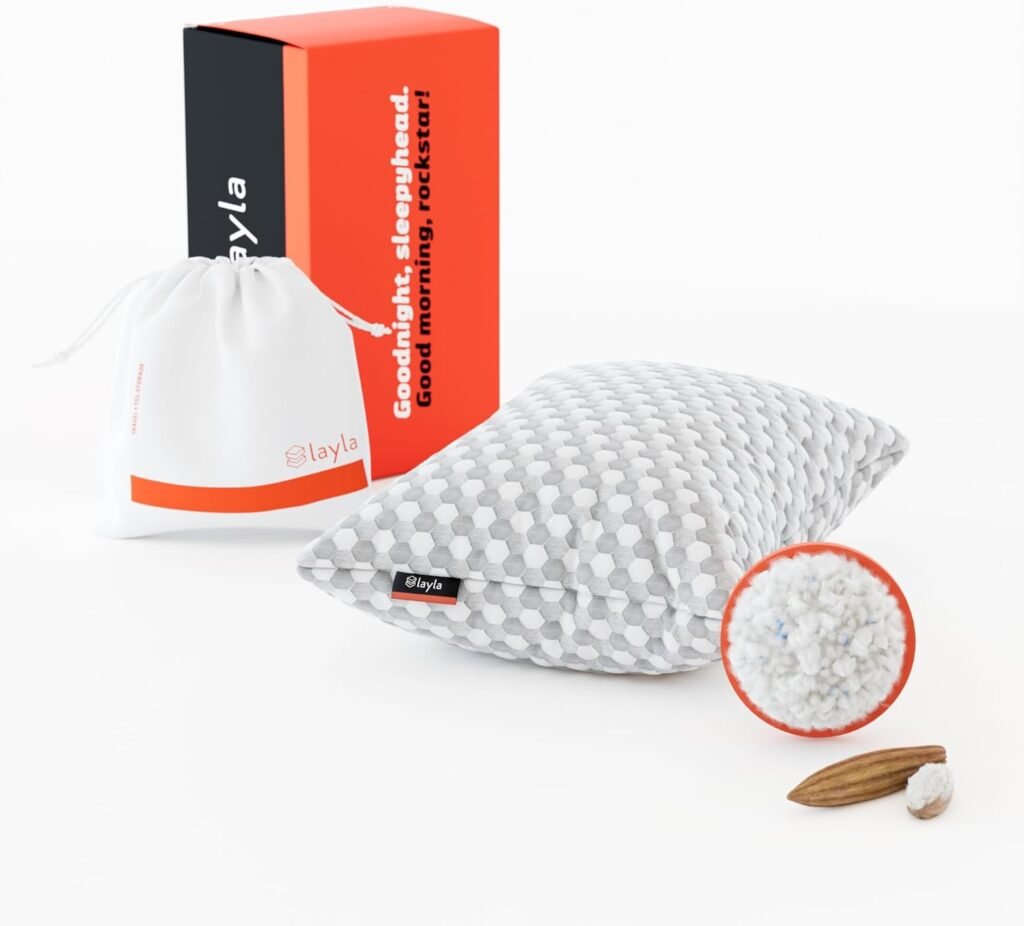
Features a customizable design with natural kapok fiber fill that can be adjusted for different sleep positions and support preferences, accommodating changing needs over time.
Boll & Branch’s Down Chamber Pillow

Features a chambered design that evenly distributes fill material, preventing clumping and maintaining consistent support across the pillow’s surface throughout the night.
Luxome LAYR Customizable Pillow
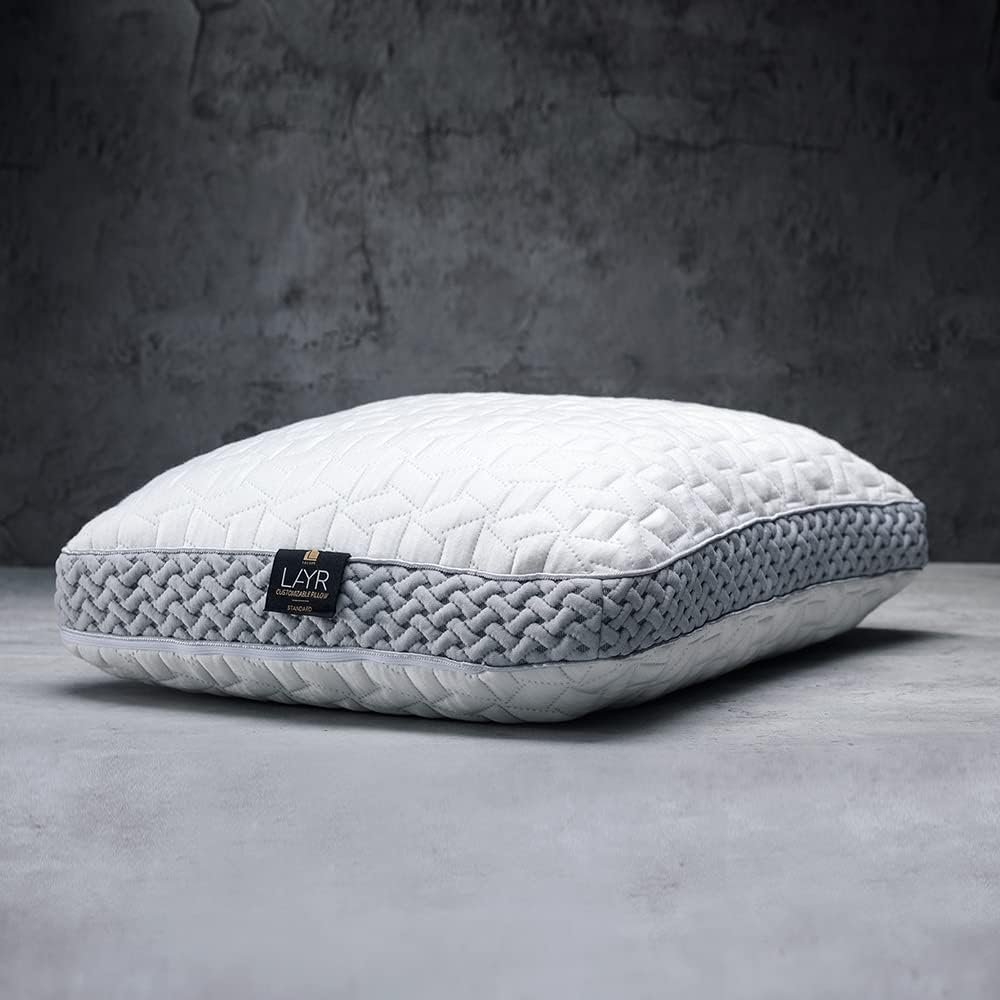
Offers multiple adjustable components, allowing you to create a completely personalized sleep experience that can be modified as your neck pain recovery progresses.
How to Choose Your Ideal Pillow
Assess Your Sleep Position
Start by identifying your primary sleep position, as this determines the basic support requirements your pillow must meet. If you change positions frequently, look for pillows that accommodate multiple sleeping styles.
Consider Your Personal Preferences
Think about materials you’ve found comfortable in the past, your temperature preferences during sleep, and any allergies or sensitivities that might influence your choice.
Read Reviews Strategically
Focus on reviews from people who mention similar neck pain issues and sleep positions. Pay attention to comments about durability and how the pillow performs after several months of use.
Factor in Adjustment Time
Remember that switching to a new pillow, especially an ergonomic design, may require 1-2 weeks of adjustment as your body adapts to the new support pattern.
Additional Strategies for Neck Pain Relief
While the right pillow is crucial, it works best as part of a comprehensive approach to neck health:
Gentle neck stretches performed before bed and upon waking can help maintain flexibility and reduce muscle tension. Simple rotations and side-to-side movements can make a significant difference.
Daytime posture awareness prevents the accumulation of tension that contributes to nighttime discomfort. Regular breaks from desk work and ergonomic workspace setup support your pillow’s nighttime efforts.
Professional evaluation may be necessary if neck pain persists despite pillow changes and other interventions. A healthcare provider can identify underlying issues that require specific treatment.
Your Path to Better Sleep Starts Here
Finding the best pillow for neck pain requires understanding your specific needs, sleep habits, and comfort preferences. The right choice will support your neck’s natural alignment while providing the comfort necessary for restorative sleep.
Remember that investing in quality sleep support pays dividends in daily comfort and long-term neck health. Take time to evaluate your options carefully, and don’t hesitate to try different approaches until you find the combination that works best for your unique situation. Your neck—and your overall well-being—will thank you for the effort.

